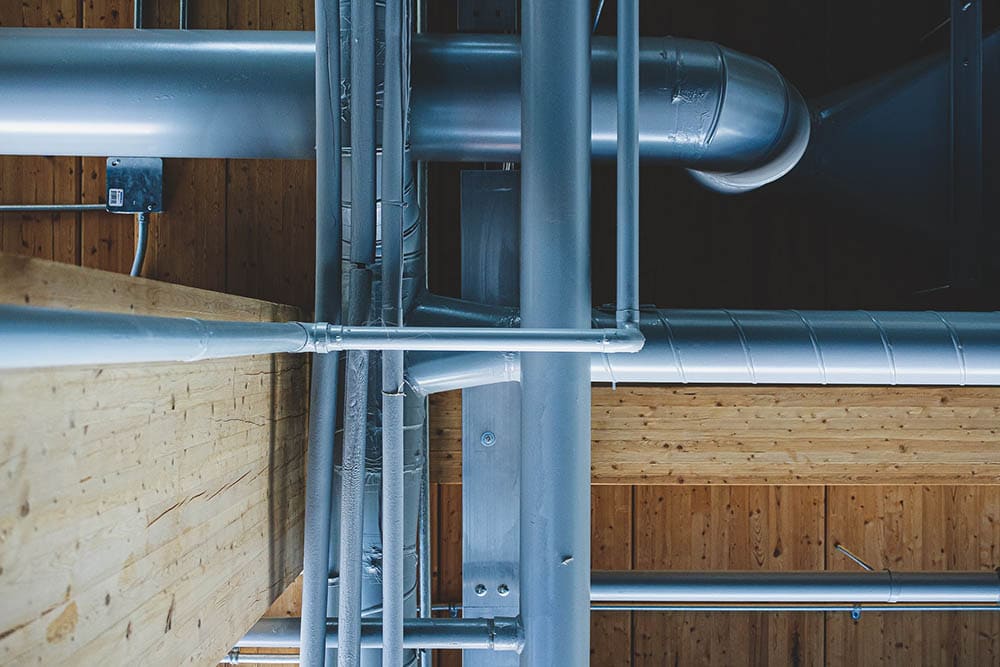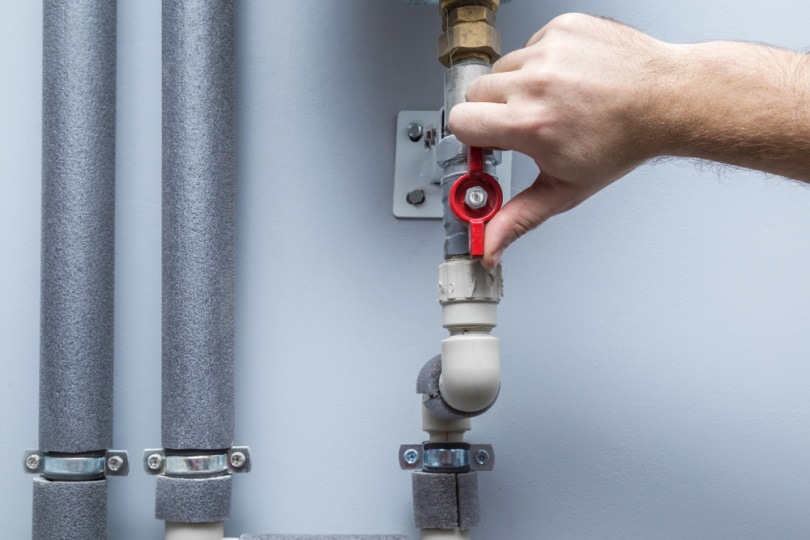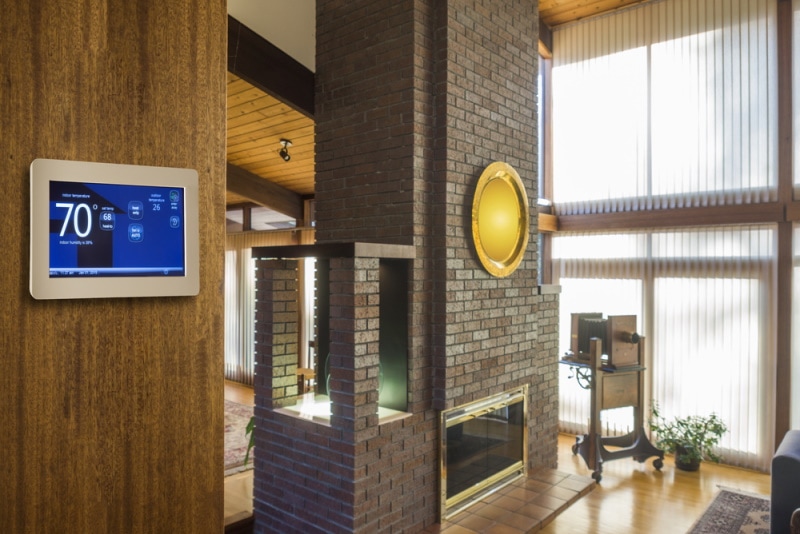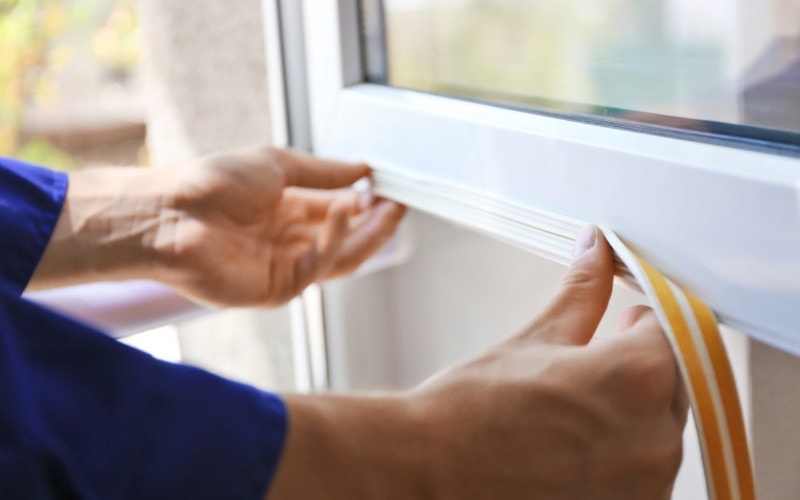How to Prepare Your Home for a Freeze: 10 Crucial Steps
-
Pete Ortiz
- Last updated:

Freezing weather is common during the winter, but it can also be dangerous and destructive if you are not prepared. Freezing weather can damage pipes, cause the power to go out, and can even be deadly in the wrong situations. In order to avoid the harshest effects of cold weather, you need to prepare your home for the worst. The dangers of cold weather can largely be mitigated if you take the necessary precautions.
Here is how you can prepare your home for a hard freeze in 10 crucial steps.
Preparation
One of the first things you want to do before preparing your house for a freeze is to check the forecast. The colder the weather and the longer the cold snap, the more likely you are to run into problems at home. A light freeze just for a night is not likely to cause issues, but a hard freeze that persists for multiple days can be a strain on your home. Keep an eye on the forecast as the freeze approaches because sometimes temperatures change as the forecast becomes clearer.
You also want to start preparing for a hard freeze before the weather arrives. Take time out of your day to do some preparations when the weather is still warm. You do not want to be scrambling to get things done as the weather is deteriorating or if the mercury is already dropping.

The 10 Steps on How to Prepare Your Home for a Freeze
1. Protect Your Pipes
Pipes are the most susceptible part of a home when it comes to cold weather. When water freezes, it expands. If all of the water in your pipes freeze, it will expand and could potentially cause the pipes to burst. In order to prevent that, you should move to protect your pipes. You can wrap exposed pipes in blankets or pool noodles to provide some much-needed insulation. Exposed outdoor pipes, like the inlet pipes into the house, are some of the most vulnerable areas to address. You can also wrap the pipes under your sinks to help prevent them from freezing.

2. Keep a Drip On
Another way to help protect your pipes is to allow some of your faucets to drip when the temperature is below freezing. Moving water is harder to freeze than standing water, so keeping a drip allows the water to move continuously through your pipes. Turn the faucets on so they are letting one drop go every few seconds. Faucets on exterior walls are the most effective because they will help protect pipes in the exterior walls from freezing.
3. Locate Your Water Shut Off Valve
You need to locate your main water shut-off valve and know how to operate it before freezing weather sets in. In the event that your pipes do burst and you start getting leaks or gushing water after a freeze, you need to be able to shut off the water before the damage spreads and becomes more serious. People who do not know how to shut their water off are at risk of letting water pour freely into their houses, which can be a nightmare. Many shutoff valves can be closed by hand, but some of them require a wrench or key to operate. If your pipes burst or water starts leaking in your home, you need to turn the water off immediately.

4. Keep Interior Doors Open
When cold weather moves in, you want to try and keep your interior doors open whenever possible. Keeping doors open will allow warm air from your home to circulate throughout the house and warm everything evenly. Closed doors can trap air causing some rooms to be warm and other rooms to be cold. Drafty rooms or rooms with many windows can become much colder than the rest of the house and keeping doors open can help the air blend better.
Keeping closet, cabinet, and vanity doors open can also help warm air reach your vents, pipes, and ducts, which can prevent key items in your home from freezing.
5. Keep the Garage Door Closed
While you want to keep your interior doors open, it is best to keep your garage door closed. You do not want your garage to freeze. A frozen garage can cause issues with your vehicles, cause your garage floor to become icy, and can let freezing temperatures seep into your house through your garage-to-house door. Entering your house through the garage during the winter and keeping the garage door closed as much as possible will create a buffer zone between you and the freezing temperatures outside.

6. Clear Your Gutters
Cleaning out gutters is a burdensome task, but it is an important one to do before freezing weather moves in. If you have clogged gutters, they can freeze up when water becomes trapped in them. Clogged gutters do not let water flow properly. Like pipes, frozen gutters can become damaged or even burst. Frozen gutters can also lead to icy overrun and icicles forming on your gutters which can cause water to drip and run into your foundation.
7. Check Your Thermostat and AC System
Make sure the heater works. If you have a gas heater, make sure that your gas lines are functioning and that you have enough fuel for the coming weather. Make sure your thermostat works and that the heat kicks on quickly. The last thing you want is for your heater to stop working during a deep freeze. That can quickly turn into a dangerous situation.

8. Stock Up on Supplies
One of the last things you want to do is to stock up on supplies before the weather moves in. It is important to have a certain number of critical supplies on hand. Cold weather can turn dangerous or even deadly if people are not properly prepared.
Here are some of the supplies you want to keep on hand before a freeze:
- Blankets
- Plenty of warm, clean clothes
- Flashlights
- First aid supplies and medications
- Firewood (if you have a fireplace)
- Sealed drinking water for at least 3 days
- Nonperishable food for at least 3 days
- An emergency radio
9. Seal Gaps and Holes
If you have time, look to seal any gaps or holes in your home where cold air could enter. Check gaps under doors and between windows. Use expanding foam, weather strip, or caulk to seal up any gaps. Sealing up your home will prevent drafts from entering, and it will help keep your home more insulated. That added insulation will help in all weather, especially cold weather.

10. Protect Sensitive Plants
Many plants are susceptible to cold. If your plants are not cold-hardy or freeze-resistant, a hard freeze can kill them overnight. If you have plants that you want to survive into the next season, you need to protect them. Freezing weather is a death sentence for a lot of plants, and they will not bounce back if they freeze. You can cover sensitive plants with blankets or bags. You can also bring sensitive plants into the garage to weather the storm, which is another reason why it can be important to keep your garage above freezing.
 Conclusion
Conclusion
Two of the most damaging parts of a hard freeze are the stress on your pipes and the damage to your plants. If the power goes out or if the freezing weather persists for days at a time, it can become dangerous if you are not prepared. Prepping your house, stocking up on key supplies, and being informed about the incoming weather can help you stay ahead and remain safe during a hard freeze.
Featured Image Credit: JamesDeMers, Pixabay
Contents


